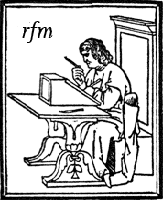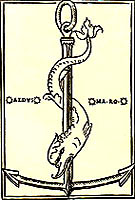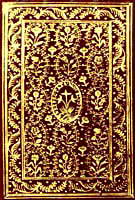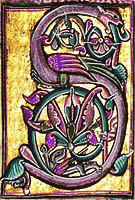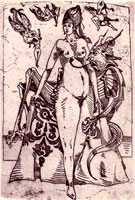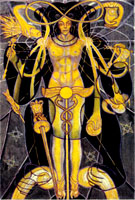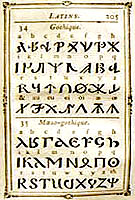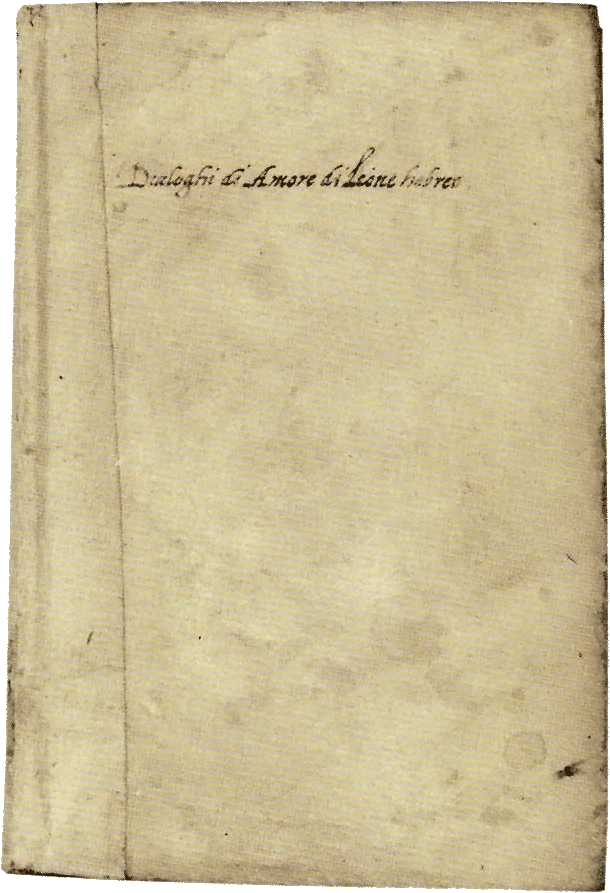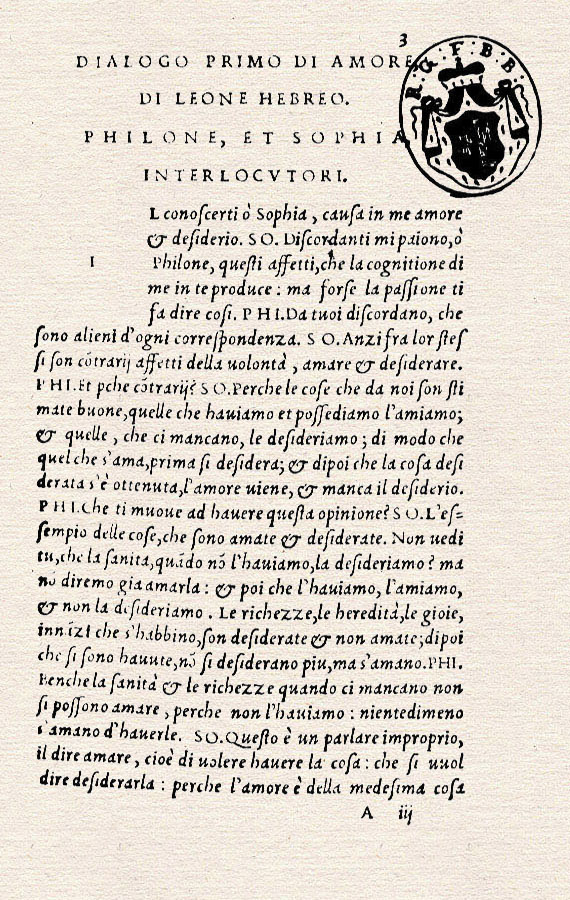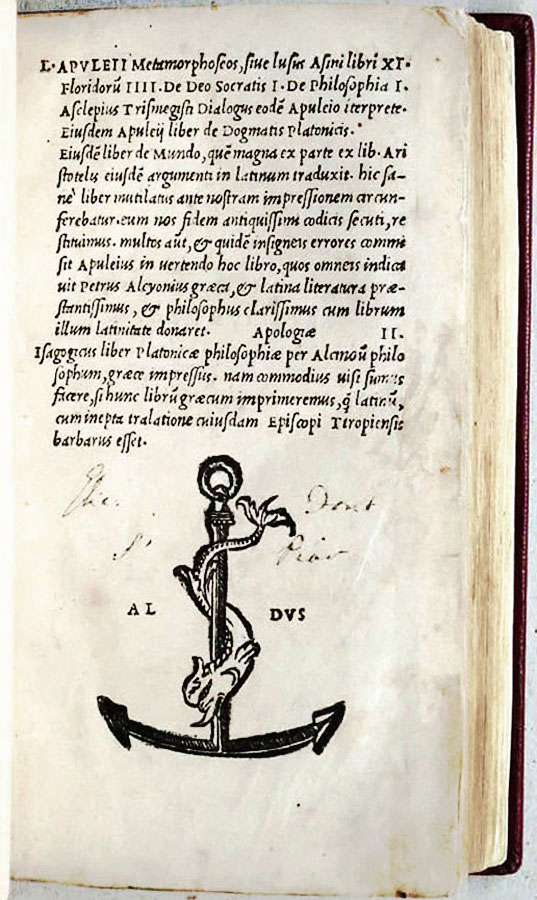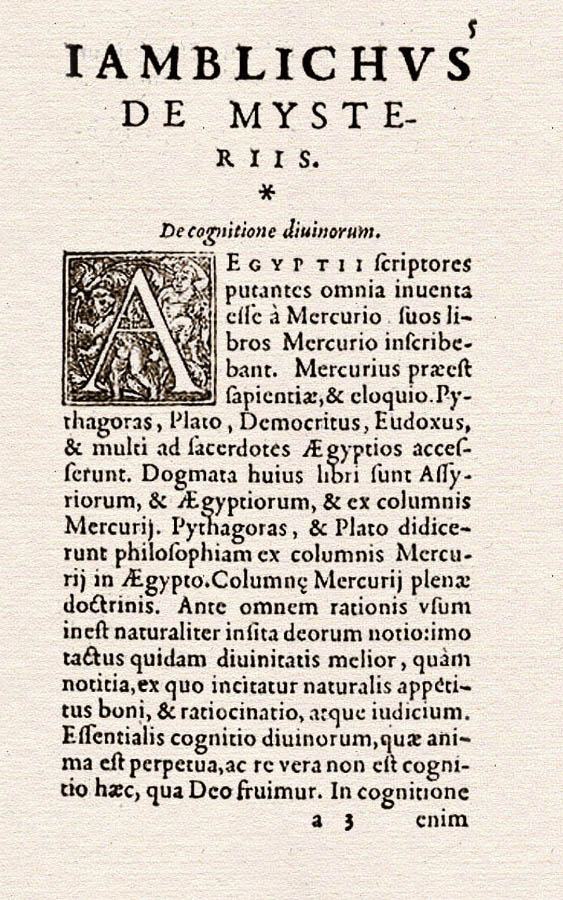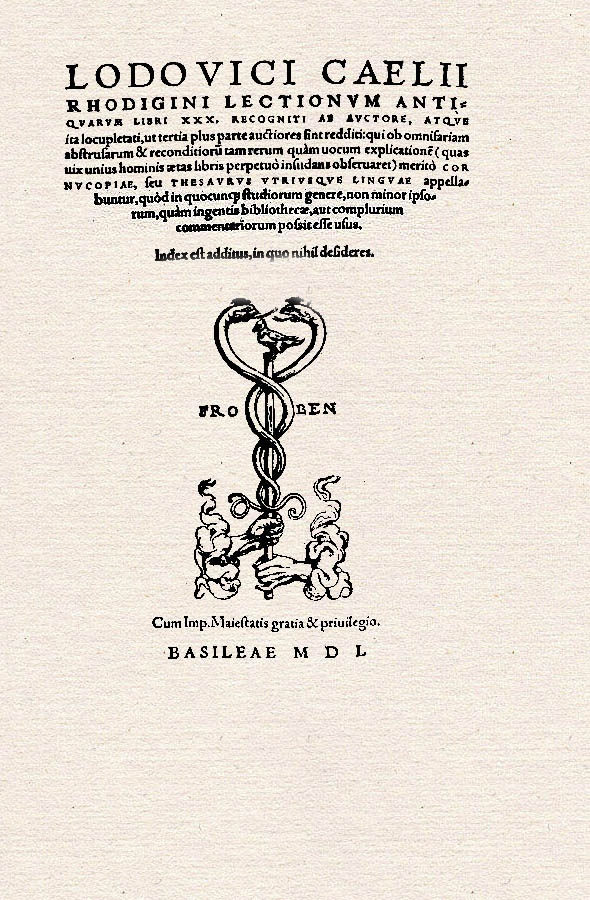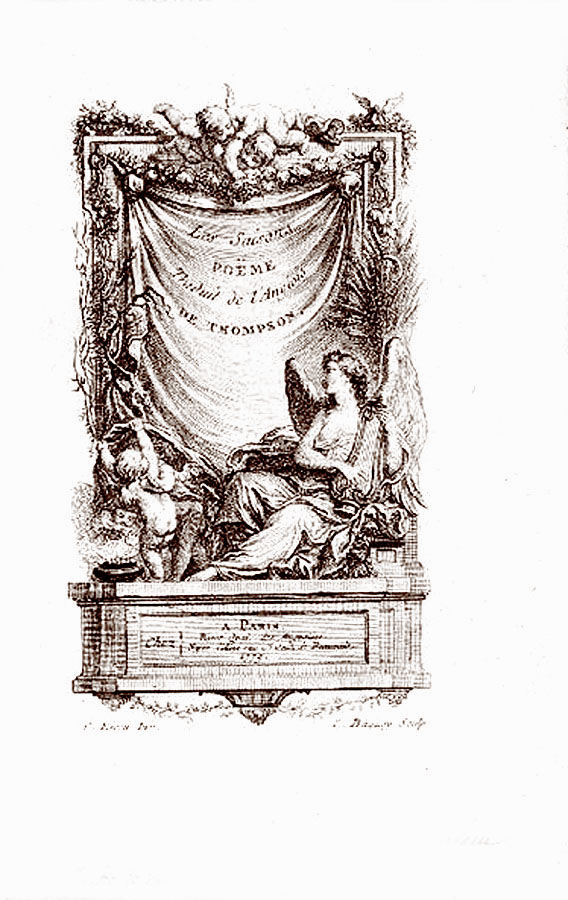Jehuda ben Isaak Abravanel: Dialoghi di amore
Abravanel Dialoghi di amore
Leo Hebraeus
Jehuda ben Isaak Abravanel, יהודה בן יצחק אברבנאל:
DIALOGHI DI AMORE, COMPO-|STI PER LEONE MEDICO | HEBREO || Signet mit Putten und Füllhörnern || IN VINEGIA, M. D. LII.
Kolophon FF4r: IN VINEGIA, NELL’ANNO. | M. D. LII. || IN CASA DE’ FIGLIVOLI | DI ALDO. Verso Signet wie oben.
Venedig: Paulus Manutius, 1552.
Octavo. 154 × 102 mm. 228 Blätter. – Lagenkollation: A-Z8, AA-EE8, FF4. Das Signet umrandet von Putten und Füllhörnern auf Titel und letztem Blatt.
Inhalt: fol. A1r: Titel — fol. A1v: weiß — fol. 2r: Mariano Lenzi: Epistola a Madonna Aurelia Petrucci — fol. 3r: Jehuda Abravanel: Dialoghi di amore — fol. 228r: Lagenverzeichnis; Kolophon — fol. 228v: Signet.
Pergament der Zeit auf drei Bünden, der Rücken v. a. H. mit einem Streifen aus festem (Inkunabel-?) Papier überklebt, helle handgestochene Kapitale, Goldschnitt. In schöner Kalligraphie auf dem Vorderdeckel oben: „Dialoghi di Amore di Leone hebreo“.
Provenienz: Aus der Bibliothek der Fugger-Familie zu Augsburg, mit deren Bibliotheksnummer auf dem vorderen fliegenden Vorsatz recto oben sowie einem ovalen Stempel auf fol. 3r. oben mit dem Wapppen und den Buchstaben „R: G: F: B: B:“.
¶ Judah Abravanel (um 1460 – 1525), ältester Sohn von Isaak und Freund Pico de Mirandolas, war Arzt, Dichter und Philosoph. In seinem Geburtsort Lissabon studierte er Medizin und praktizierte um 1483 als Arzt. Nachdem er seinem Vater nach Spanien und Neapel gefolgt war, nahm er in Italien die Praxis wieder auf und setzte auch die Lehrtätigkeit fort. Von den Werken Picos und Ficinos beeinflußt schrieb er sein vorliegendes Hauptwerk über das Wesen der Liebe; ein anderes „De coeli harmonia“ ist verloren. Es verbindet sich hier die platonische Tradition mit der kabbalistischen, indem versucht wird, die Überlieferung des AT mit dem Mythos vom Urmenschen in Einklang zu bringen. So soll der Androgyn des Symposions auf alttestamentliche Tradition zurückgehen. Dem androgynen Menschen entspricht der Gott, wobei Abravanel die kabbalistische Sophien-Lehre zugrunde legt: Sophia wird zur Mittlerin beim Vorgang der Schöpfung, zugleich bei dem der Erlösung, der Rückführung aus der Entfremdung. Cf. Wininger I,4-5. Dazu: Neoplatonismus.
¶ Vierte aldinische Ausgabe des erstmals 1541 bei Paulus Manutius gedruckten und von Mariano Lenzi herausgegebenen, Madonna Aurelia Petrucci gewidmeten Buches, dessen Editio princeps 1535 bei Blado in Rom erschien. Hervorragend gedruckt mit den feinen Kursivtypen jener Zeit, leichter lesbar als die frühen, da mit weniger Ligaturen versehen, nur der Überstrich zur Abkürzung des m/n wird benutzt.
¶ Cf. B. Zimmels: „Leo Hebräus, ein jüdischer Philosoph der Renaissance, sein Leben, seine Werke und seine Lehren“. Breslau, 1886 – Ernst Benz: „Adam, Der Mythus vom Urmenschen“. München-Planegg, 1955. pp. 31-49.
Renouard 154,13 – cf. Adams A 62 (Ausg. 1549 gleicher Koll.) – BM STC 3 – Bibliographien – Text.
Die Abbildungen stammen aus meinem Katalog Nr. 7; sie wurden bearbeitet und geben nicht den originalen Zustand wieder.
Renouard
La première édition de ce livre est de Rome, presso Antonio Blado, 1535, in-4°: celle ci [1541] est la seconde. On y retrouve la préface de l’éditeur Mariano Lenzi à Madonna Aurelia Petrucci, répétée de même dans les quatre autres réimpressions Aldines, dont les dates sont 1545, 49, 52 et 58.
— Antoine Auguste Renouard: Annales de l’imprimerie des Alde, histoire des trois Manuce et de leurs éditions. Troisième édition. Paris: Jules Renouard, 1834. p. 123.
De la comunità d’amore
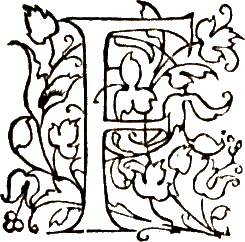 ilone. Tu hai altra volta inteso da me, o Sofia, che tutto l’universo è un individuo, cioè come una persona, e ognuno di questi corporali e spirituali, eterni e corruttibili, è membro e parte di questo grande individuo, essendo tutto e ciascuna de le sue parti produtta da Dio per uno fine comune nel tutto, insieme con uno fine proprio in ognuna de le parti. Séguita che tanto il tutto e le parti sono perfette e felici, quanto rettamente e interamente conseguono gli offizi ai quali sono indirizzati dal sommo opifice. Il fine del tutto è l’unita perfezione di tutto l’universo, disegnata dal divino architettore, e il fine di ciascuna delle parti non è solamente la perfezione di quella parte in sé, ma che con quella deserva rettamente a la perfezione del tutto, che è il fine universale, primo intento de la divinitá. E per questo comun fine, piú che per il proprio, ogni parte fu fatta, ordinata e dedicata; talmente che, mancando parte di tal servitú negli atti pertinenti a la perfezione de l’universo, le sarebbe maggiore difetto e piú infelice verrebbe a essere, che se li mancasse il suo proprio atto; e cosí si felicita piú per il comune che per il proprio, a modo d’uno individuo umano, che la perfezione d’una de le sue parti, come l’occhio o la mano, non consiste solamente né principalmente nell’essere bello occhio o bella mano, ma nel vedere assai de l’occhio, né ancora nel fare troppe arti la mano: ma prima e principalmente consiste che l’occhio veda e la mano faccia quel che conviene al bene di tutta la persona, e si fa piú nobile ed eccellente per il retto servizio che fa a la persona tutta, perché la propria bellezza è proprio atto; onde molte volte per salvare tutta la persona la parte naturalmente si rappresenta ed espone al proprio pericolo, come vuol fare il braccio, che si rappresenta a la spada per salvazione de la testa. Essendo adunque questa legge sempre osservata ne l’universo, l’intelligenzia si felicita piú nel muovere l’orbe celeste (che è atto necessario a l’essere del tutto, se ben è atto estrinseco e corporeo) che ne la intrinseca intelligenzia sua essenziale, che è il proprio atto: e questo intende Aristotile, dicendo che l’intelligenzia muove per fine piú alto ed eccellente, che è Dio, consequendo l’ordine suo ne l’universo; si che amando e movendo il suo orbe collega l’unione de l’universo, con la qual propriamente consegue l’amore, l’unione e la grazia divina unificatrice del mondo, la quale è il suo ultimo fine e desiderata felicitá.
ilone. Tu hai altra volta inteso da me, o Sofia, che tutto l’universo è un individuo, cioè come una persona, e ognuno di questi corporali e spirituali, eterni e corruttibili, è membro e parte di questo grande individuo, essendo tutto e ciascuna de le sue parti produtta da Dio per uno fine comune nel tutto, insieme con uno fine proprio in ognuna de le parti. Séguita che tanto il tutto e le parti sono perfette e felici, quanto rettamente e interamente conseguono gli offizi ai quali sono indirizzati dal sommo opifice. Il fine del tutto è l’unita perfezione di tutto l’universo, disegnata dal divino architettore, e il fine di ciascuna delle parti non è solamente la perfezione di quella parte in sé, ma che con quella deserva rettamente a la perfezione del tutto, che è il fine universale, primo intento de la divinitá. E per questo comun fine, piú che per il proprio, ogni parte fu fatta, ordinata e dedicata; talmente che, mancando parte di tal servitú negli atti pertinenti a la perfezione de l’universo, le sarebbe maggiore difetto e piú infelice verrebbe a essere, che se li mancasse il suo proprio atto; e cosí si felicita piú per il comune che per il proprio, a modo d’uno individuo umano, che la perfezione d’una de le sue parti, come l’occhio o la mano, non consiste solamente né principalmente nell’essere bello occhio o bella mano, ma nel vedere assai de l’occhio, né ancora nel fare troppe arti la mano: ma prima e principalmente consiste che l’occhio veda e la mano faccia quel che conviene al bene di tutta la persona, e si fa piú nobile ed eccellente per il retto servizio che fa a la persona tutta, perché la propria bellezza è proprio atto; onde molte volte per salvare tutta la persona la parte naturalmente si rappresenta ed espone al proprio pericolo, come vuol fare il braccio, che si rappresenta a la spada per salvazione de la testa. Essendo adunque questa legge sempre osservata ne l’universo, l’intelligenzia si felicita piú nel muovere l’orbe celeste (che è atto necessario a l’essere del tutto, se ben è atto estrinseco e corporeo) che ne la intrinseca intelligenzia sua essenziale, che è il proprio atto: e questo intende Aristotile, dicendo che l’intelligenzia muove per fine piú alto ed eccellente, che è Dio, consequendo l’ordine suo ne l’universo; si che amando e movendo il suo orbe collega l’unione de l’universo, con la qual propriamente consegue l’amore, l’unione e la grazia divina unificatrice del mondo, la quale è il suo ultimo fine e desiderata felicitá.
— De la comunità d’amore, dialogo secondo.
De l’origine d’amore
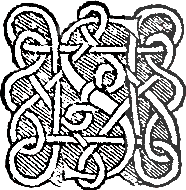 ofia. (…) Ben che io mi credeva, o Filone, che ancora il fine perché nacque l’amore fusse qualche volta affliggere e cruciare gli amanti che affettuosamente amano le sue amate.
ofia. (…) Ben che io mi credeva, o Filone, che ancora il fine perché nacque l’amore fusse qualche volta affliggere e cruciare gli amanti che affettuosamente amano le sue amate.
Filone. Ancora che l’amore porti seco afflizione e tormento, ansietá e affanno, e molt’altre pene che saria longo a dirle, non sono giá queste il suo proprio fine, ma piú presto il soave diletto, che è contrario di queste. Niente di manco tu hai detto il vero, non d’ogni amore, ma solamente del mio verso di te, che ’l fine suo non è mai stato piacere né diletto; anzi il principio, il mezzo e ’l fine suo veggo che è tutto doglie, angustie e passioni.
Sofia. Come adunque falla in te la regola? e il tuo come è privo di quello che ogn’altro conseguir debbe?
Filone. Questo il puoi domandare a te e non a me. A me sta amarti quanto ne l’animo mio può capire; se tu fai l’amore sterile e privo del suo debito fine, vuoi tu che cerchi la tua escusazione?
Sofia. Voglio che cerchi la tua: ché essendo l’amor tuo nudo del proprio fine che hai dato a l’amore, bisogna che ’l tuo non sia vero amore, o che questo non sia il vero fine suo.
— De l’origine d’amore, dialogo terzo.
Mario Equicola
 n seinem Libro di natura d’amore, Venedig: de Sabbio, 1526, werden folgende Autoren und Werke gelistet: Guitton di Arezzo (ca. 1230-1294), Guido Cavalcanti (ca. 1250-1300), Dante Alegieri (1265-1321), Francesco Petrarcha (1304-1374), Francesco Barberino (1294-1348), Romant de la Rosa, Gioan Boccaccio (1313-1375), Marsilio Ficino (1433-1499), Gioan Pico della Mirandola (1462-1494), Gioan Francesco Pico della Mirandola (1569-1533), Francesco Diaceto (1446-1522), Battista da campo Fregoso (1450-1505), Battista delli Alberti (1404-1472), Platina (1421-1481), Pier di Hedo, Pier Bembo (1470–1547), Battista Carmelita (Mantovano, 1447-1516), Gioan Iacovo Calandra (Mantua, 15. Jh.).
n seinem Libro di natura d’amore, Venedig: de Sabbio, 1526, werden folgende Autoren und Werke gelistet: Guitton di Arezzo (ca. 1230-1294), Guido Cavalcanti (ca. 1250-1300), Dante Alegieri (1265-1321), Francesco Petrarcha (1304-1374), Francesco Barberino (1294-1348), Romant de la Rosa, Gioan Boccaccio (1313-1375), Marsilio Ficino (1433-1499), Gioan Pico della Mirandola (1462-1494), Gioan Francesco Pico della Mirandola (1569-1533), Francesco Diaceto (1446-1522), Battista da campo Fregoso (1450-1505), Battista delli Alberti (1404-1472), Platina (1421-1481), Pier di Hedo, Pier Bembo (1470–1547), Battista Carmelita (Mantovano, 1447-1516), Gioan Iacovo Calandra (Mantua, 15. Jh.).
— Siehe fol. DD4r mit Tavola der Ausgabe 1526. — Die Abbildung rechts zeigt den Titel der Erstausgabe 1525.
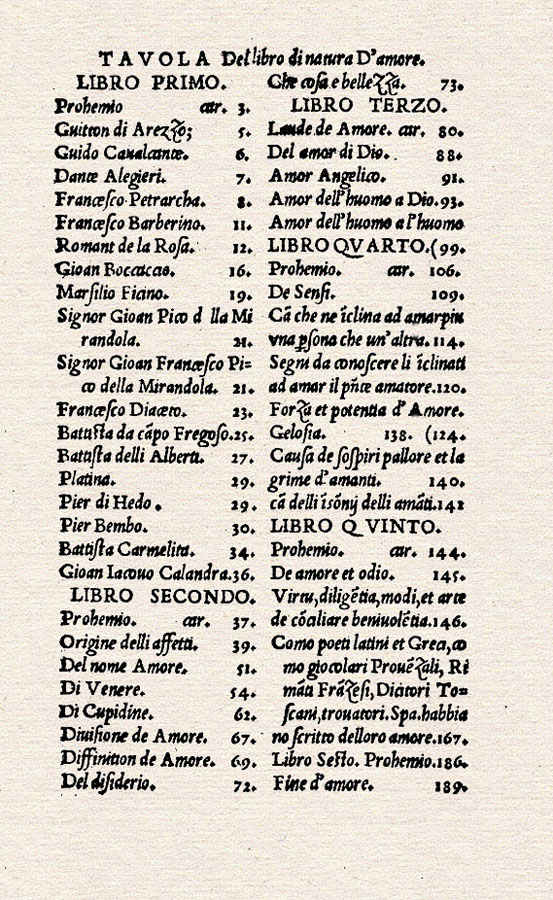
Mario Equicola, ca. 1470 - 26. Juli 1525, ein italienischer Renaissancehumanist, neulateinischer Autor, Bibliophiler und Höfling von Isabella d’Este und Federico II Gonzaga. Als Junge zog er nach Neapel, wo er in die Accademia Pontaniana eintrat. Später siedelte er nach Florenz über, wo er bei Marsilio Ficino studierte und dessen Neoplatonismus übernahm, dann nach Mantua an den Hof von Isabella und Federico. Equicola zeigte Interesse an zeitgenössischer einheimischer Poesie, er war einer der ersten Gelehrten, der auf die Neuerungen der Troubadoure aufmerksam machte und die Ursprünge einheimischer Poesie auf sie zurückführte. In seinem berühmtesten Werk, das zwischen 1494 und 1496 in lateinischer Sprache verfaßt, aber erst 1525 zu Venedig in italienischer Sprache veröffentlicht wurde, dem Libro de natura de amore di Mario Equicola secretario del illustrissimo S. Federico II. Gonzaga marchese di Mantua, studierte Equicola die Metaphysik der Liebe sowie die Natur der poetischen, höfischen Liebe. Von seinen Ansichten wurden Autoren wie Agostino Nifo: De pulchro et amore, Giuseppe Betussi: Dialogo amoroso und Lope de Vega: El maestro de danzar beeinflußt.
— Die Portraitabbildung stammt aus D. Martuscello: Biografia degli uomini illustri del Regno di Napoli. Neapel: Gervasi, 1822-1829.
Maria Vittoria Comacchi:
The Dialoghi d’amore: The Publication and the Language
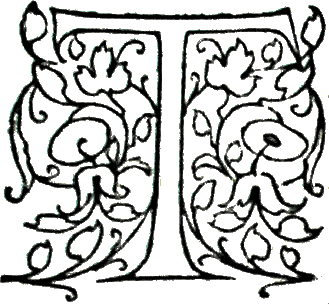 he integral edition – if we exclude the controversial theory of a fourth dialogue (Vila-Chã 2006; Guidi 2011) – of the Dialoghi d’amore, composed of three dialogues, was printed in Rome by Antonio Blado d’Asola. The editor of the editio princeps of the Dialoghi was Mariano Lenzi. Manuppella (Leão Hebreu 1983) has shown a relationship between Lenzi and the well-known Claudio Tolomei, a Sienese exile in Rome, poet, and philologist, interested in the development of Tuscan vernacular. Thanks to the letter addressed by Tolomei to Pope Paul III’s secretary, Blosio Palladio, Nelson Novoa (2007, 2008) has revealed that Lenzi was Tolomei’s nephew. In some way, Claudio Tolomei seems connected to the publication of the Dialoghi. The publication of the Dialoghi by Tolomei’s nephew could be presumptively considered as part of the active debate about the Italian vernacular. Indeed, it is not accidental that a syncretistic dialogue, like that of Leone Ebreo, appeared on the editorial scene when the Italian vernacular was a hotly discussed subject among circles of literati. The question of language was paramount, and literary and philosophical works on love, albeit with differences both in the spirit and in the approach to the love question, shared the Italian vernacular as a communication medium, becoming, in some cases, expressions of different and contrasting Italian vernacular theories. In 1525 Mario Equicola’s Libro de la natura de amore was published, followed later by Baldassarre Castiglione’s Libro del Cortegiano (1528), by the 1530 revised version of Pietro Bembo’s Asolani, and by the publication of Francesco Cattani da Diacceto’s I tre libri d’amore in 1561. Furthermore, Neri Dortelata finally printed Ficino’s vernacular translation of Commentarium in Convivium Platonis de amore in 1544, although Ficino had already composed the original Latin text and its vernacular translation after the second half of the fifteenth century. Noteworthy, in this context and for the connection between the love issue and the vernacular question is Castiglione’s interest for Leone’s Dialoghi, as attested by three letters written in 1525: Castiglione asked for “Leone’s books” together with Gian Giorgio Trissino’s Castellano and Pietro Bembo’s Prose della volgar lingua, showing that the Dialoghi was already known 10 years before their publication.
he integral edition – if we exclude the controversial theory of a fourth dialogue (Vila-Chã 2006; Guidi 2011) – of the Dialoghi d’amore, composed of three dialogues, was printed in Rome by Antonio Blado d’Asola. The editor of the editio princeps of the Dialoghi was Mariano Lenzi. Manuppella (Leão Hebreu 1983) has shown a relationship between Lenzi and the well-known Claudio Tolomei, a Sienese exile in Rome, poet, and philologist, interested in the development of Tuscan vernacular. Thanks to the letter addressed by Tolomei to Pope Paul III’s secretary, Blosio Palladio, Nelson Novoa (2007, 2008) has revealed that Lenzi was Tolomei’s nephew. In some way, Claudio Tolomei seems connected to the publication of the Dialoghi. The publication of the Dialoghi by Tolomei’s nephew could be presumptively considered as part of the active debate about the Italian vernacular. Indeed, it is not accidental that a syncretistic dialogue, like that of Leone Ebreo, appeared on the editorial scene when the Italian vernacular was a hotly discussed subject among circles of literati. The question of language was paramount, and literary and philosophical works on love, albeit with differences both in the spirit and in the approach to the love question, shared the Italian vernacular as a communication medium, becoming, in some cases, expressions of different and contrasting Italian vernacular theories. In 1525 Mario Equicola’s Libro de la natura de amore was published, followed later by Baldassarre Castiglione’s Libro del Cortegiano (1528), by the 1530 revised version of Pietro Bembo’s Asolani, and by the publication of Francesco Cattani da Diacceto’s I tre libri d’amore in 1561. Furthermore, Neri Dortelata finally printed Ficino’s vernacular translation of Commentarium in Convivium Platonis de amore in 1544, although Ficino had already composed the original Latin text and its vernacular translation after the second half of the fifteenth century. Noteworthy, in this context and for the connection between the love issue and the vernacular question is Castiglione’s interest for Leone’s Dialoghi, as attested by three letters written in 1525: Castiglione asked for “Leone’s books” together with Gian Giorgio Trissino’s Castellano and Pietro Bembo’s Prose della volgar lingua, showing that the Dialoghi was already known 10 years before their publication.
If doubts on the publication of the Dialoghi remain, also the question on the original language of the Dialoghi is still open since there is not an autograph of the Dialoghi. If we consider the manuscript tradition concerning the third dialogue, we find that MS Patetta 373, the most ancient manuscript (1511–1513), according to Garvin (2001), for example, presents Latinisms, archaisms, and Spanishisms. Consequently, observing where Judah lived, it is possible that the first draft of the Dialoghi had been written in Italian vernacular, influenced by Spanish and Latin. Moreover, within the text, Judah often explains Hebrew words and how we should rightly translate them in Italian vernacular. These clarifications seem essential parts of his reasoning as if Judah had written his Dialoghi in a different language from Hebrew, addressing them to non-Jewish readers.
Heritage and Rupture with Tradition
 he Dialoghi d’amore is a philosophical work in a dialogical form, organized in three dialogues, which diverge for subject and length. The first one defines the concepts of love and desire, while the second illustrates a cosmology of love. They both anticipate the principal notions of the third dialogue: the love circle and the soul’s return to God. Differences notwithstanding, the three dialogues share a common framework: the courtship of the male character, Filone, toward the female one, Sofia. However, Filone is also the master of love, while Sofia is the disciple. Nevertheless, Judah overturns the roles again in the couple. Indeed, Sofia seems to lead their romantic liaison philosophically. She introduces Filone, as the real disciple of love, to Sophia (wisdom) of a superior and noble love, which heads toward a fruizione unitiva with God, away from the physical satisfaction, in which Filone appears yet too interested. Angela Guidi (2011) has suggested an interesting and different interpretation of their intellectual relation, arguing that Leone uses for the dialogic scheme between Filone and Sofia a biblical model, that of the conversation between King Solomon and the Queen of Sheba. Therefore, according to Guidi (2011), Filone, who embodies the Solomonic Jewish divine wisdom, maintains his primary and superior role, trying to lead on a path of “Judaization” Sofia, the foreign woman, the personification of the pagan Greek philosophy.
he Dialoghi d’amore is a philosophical work in a dialogical form, organized in three dialogues, which diverge for subject and length. The first one defines the concepts of love and desire, while the second illustrates a cosmology of love. They both anticipate the principal notions of the third dialogue: the love circle and the soul’s return to God. Differences notwithstanding, the three dialogues share a common framework: the courtship of the male character, Filone, toward the female one, Sofia. However, Filone is also the master of love, while Sofia is the disciple. Nevertheless, Judah overturns the roles again in the couple. Indeed, Sofia seems to lead their romantic liaison philosophically. She introduces Filone, as the real disciple of love, to Sophia (wisdom) of a superior and noble love, which heads toward a fruizione unitiva with God, away from the physical satisfaction, in which Filone appears yet too interested. Angela Guidi (2011) has suggested an interesting and different interpretation of their intellectual relation, arguing that Leone uses for the dialogic scheme between Filone and Sofia a biblical model, that of the conversation between King Solomon and the Queen of Sheba. Therefore, according to Guidi (2011), Filone, who embodies the Solomonic Jewish divine wisdom, maintains his primary and superior role, trying to lead on a path of “Judaization” Sofia, the foreign woman, the personification of the pagan Greek philosophy.
Significant is how Judah mentions, throughout the entire Dialoghi, only Plato, Aristotle, Plotinus, Maimonides, Ibn-Gabirol called Avicembron, Avicenna, al-Farabi, al-Gazali, Averroes and, once, the Jewish kabbalists (Pines 1983). In particular, Judah appears to be acquainted with Aristotle’s Physics and Metaphysics, with Maimonides’ Moreh nevukhim, and obviously with Plato’s Timaeus and Symposium (Feldman 2005). Judah, who composed his Dialoghi in Italy, appears influenced by contemporary authors and in particular by the Florentine Neoplatonic Academy philosophers and their philosophies of love, as well. For instance, Pines (1986) and Gershenzon (1992) estimate Ficino’s Commentarium in Convivium Platonis de amore as the principal Christian source of Judah’s thought. Interesting is the hypothesis of a sort of acquaintance or a friendly relationship between Giovanni Pico and Judah because of a document recorded by the physician Amato Lusitano, who met Judah’s grandson in the second half of the sixteenth century in Salonika (Leone Ebreo 1929a, Regesten, VI, Nr. 13). Judah’s grandson seems to have come into possession of a work about astrological themes, De coeli harmonia, written by the very Judah in scholastico stilo (probably in Latin and in the form of a tractate) upon request of the “divine” Pico della Mirandola. The issue is quite problematic, and some scholars have looked at Pico’s production in search of references to Judah. Actually, in Pico’s Disputationes adversus astrologiam divinatricem, Pico talks about an illustrious man and renowned mathematician, a certain Leo Hebraeus. However, most scholars believe that Pico was referring to Levi ben Gershon, who lived in the fourteenth century. One of the main problems of a direct relationship between the Italian and the Portuguese is the fact that Pico died in 1494, only 2 years after Judah’s arrival in Italy, and that the De coeli harmonia is today lost. Thus, some scholars believe that the “divine” Pico mentioned by Judah could rather be Giovanni Pico’s nephew, Gianfrancesco Pico della Mirandola (Leão Hebreu 1983). Nevertheless, what should matter is to understand if and to what extent Giovanni Pico could have influenced Judah’s thought.
One of the key features that Judah shares with Giovanni Pico and more in general with Ficino and his followers and the Florentine Neoplatonic milieu is the idea of a pax philosophica, i.e., philosophical peace, in other words the belief that different philosophical and religious traditions, by means of the prisca theologia, proclaim the same truth and that their differences are only superficial and not essential. If on the one hand a peace seems to be established between Plato and Aristotle in a sort of, as Veltri (2009) says, reductio ad Platonem, which is, for example, one of the central concerns in Pico’s thought, on the other hand, this does not appear as the principal purpose in the syncretistic thought of Judah, but rather as the natural consequence of the authentic core of his philosophy: the concordance between the ancient philosophers and the Mosaic teachings and, more generally, between philosophy and religion. In particular, we should remember the long digression about the pagan cosmological myths in the second dialogue (Gershenzon 2000) and the parallel exegesis of Plato’s myth of the androgyne and the Mosaic Genesis, which demonstrate Judah’s in-depth knowledge of both Scriptures and Plato’s dialogues. Judah declares that the pagan fables are not untruthful or deceitful, because under the veil of enigmatic metaphors and allegorical words they tell the same truth of the biblical stories. The cryptic and fanciful tegument is a linguistic instrument used by the ancient sages to hide the marvelous truths about the cosmos and the divine. The different levels of reading of ancient myths distinguished by Leone Ebreo are similar to those of the Christian and Jewish exegetic tradition. Noteworthy in Judah’s interpretation of the pagan cosmological stories is his humanistic spirit, in which his acquaintance with the Renaissance hermeneutic tradition and the mythological work of Boccaccio’s De genealogia deorum gentilium surfaces (Vila-Chã 2006). Some scholars, such as Veltri (2004, 2009), Guidi (2011), and Hughes (2012), have observed that the coincidence between the ancients and the Mosaic Law should be read as a submission of the ancient myths and philosophies to the Jewish highest truth. Similarly, Lesley (1992) believes that the Dialoghi should be interpreted within the Jewish debate on this issue and that Judah’s work endorses Yoḥanan Alemanno’s idea of unity of the truth in contrast to the double-truth theory supported by the contemporary Aristotelian thinker, Elijah Delmedigo, and the Cretan philosopher, Saul ha-Cohen Ashkenazi. On the contrary, Bonfil (1996) argues that the Dialoghi cannot be conceived as an example of Jewish apologetics.
It is undeniable that also Leone’s circulo amoroso recalls Florentine Neoplatonic ideas and, in particular, Ficino’s circuitus spiritualis (Gershenzon 1992). However, according to some scholars, it could be influenced by Yoḥanan Alemanno’s kabbalistic theory of love. The Jewish kabbalist composed an exegetical work on Solomon’s Song of Songs at the instance of Giovanni Pico. A treatise on love in Hebrew, Alemanno’s Ḥeshek Shlomo (Desire of Solomon) discusses the question of the cosmic love, stressing the ascending and descending love movements and the concept of the final union of the human soul with God. Indeed, Idel (1978) believes that the circle symbols of the Dialoghi derive from the Arabic al-Batalyusi’s The Book of Intellectual Circles mediated by Alemanno’s work. However, there is no evidence of a direct recall to Alemanno in the Dialoghi, even if Idel (2005) believes that Judah could know Alemanno’s Ḥeshek Shlomo since Alemanno lived in Yeḥiel da Pisa’s house during the years of the epistolary communications between Yeḥiel and Judah’s father. In more general terms, Idel (2005) sustains the presence of a persistent Kabbalah influence and especially of the Sefer ha-zohar on several central issues of the Dialoghi. The question of a considerable weight played by the Kabbalah in the genesis of Judah’s philosophy is pivotal not only in Idel’s studies on Leone Ebreo but also, in particular, in Ariani’s (1984) and Gluck’s (2012). However, as Ogren (2016) highlights, scholars should caution against what he calls an “over-Zoharization” of the Dialoghi, since there are no explicit references to the Sefer ha-zohar.
The supreme and final union of the human soul in and with God is the most relevant element in Judah’s philosophy, grounded on the terminological and ontological definition of the notions of desire and love. Based on knowledge, because we can only love what we know, the union of man with and in God is an erotic-intellective union (Damiens 1971; Guanti 1978–1979; Perry 1980; Dorman and Levi 1985; Kodera 1995; Hughes 2004; Vila-Chã 2006). However, there is also a knowledge that is caused by love. Indeed, knowledge is love, and love is knowledge. For this reason, Leone defines the last and perfect step of the human love and of his intellective path as fruizione unitiva, an intellective copulative act or unitive cognition, a loving contemplation of and within God, going beyond the limits of both rationalistic or cognitive happiness and voluntaristic or ecstatic bliss.
To conclude, Judah in his Dialoghi debates on many questions developed by philosophers and literati such as Marsilio Ficino; Giovanni Pico; Yoḥanan Alemanno; Francesco Cattani da Diacceto, who is considered Ficino’s heir, coetaneous to Leone, and author of De pulchro, De amore, and the Panegyricus in amorem; Giovanni Pontano; Pietro Bembo; and Isaac Abravanel. Hence, Leone Ebreo’s Dialoghi d’amore represents as one of the most successful examples of sixteenth-century Neoplatonic love literature or, as Santino Caramella says (Leone Ebreo 1929b), of the Cinquecento erotology inspired by Marsilio Ficino’s Commentarium in Convivium Platonis de amore. For these reasons, even if in his Dialoghi Leone does not quote any contemporaneous philosopher, his work, a perfect trattato d’amore, should be rightly placed within the Neoplatonic love debate of his own time.
— Maria Vittoria Comacchi: Abravanel, Leon. In: Marco Sgarbi & al.: Encyclopedia of Renaissance Philosophy. Springer, 2020.
Sergius Kodera
 t is Filone’s explicit heterosexual desire which sets the Dialoghi in pointed contrast to other important classical sources for a philosophy of love, such as Plato’s Symposium and Phaedrus; (Leone Ebreo had some firsthand knowledge of the former); in these works a sort of homosexual ethics between free Greek male citizens had been elaborated. Doubtless, the differences between the Christian Neoplatonist Ficino and the Jewish philosopher Leone Ebreo are rooted in different anthropologies intrinsic to the two different creeds. This has been recently and elegantly discussed by Boyarin. “Some Christians (…) would declare that there is no Greek or Jew, no male or female. No rabbinic Jew could do so, because people are bodies, not spirits, and precisely bodies are marked as male or female, and also marked, through bodily practices.” (...)
t is Filone’s explicit heterosexual desire which sets the Dialoghi in pointed contrast to other important classical sources for a philosophy of love, such as Plato’s Symposium and Phaedrus; (Leone Ebreo had some firsthand knowledge of the former); in these works a sort of homosexual ethics between free Greek male citizens had been elaborated. Doubtless, the differences between the Christian Neoplatonist Ficino and the Jewish philosopher Leone Ebreo are rooted in different anthropologies intrinsic to the two different creeds. This has been recently and elegantly discussed by Boyarin. “Some Christians (…) would declare that there is no Greek or Jew, no male or female. No rabbinic Jew could do so, because people are bodies, not spirits, and precisely bodies are marked as male or female, and also marked, through bodily practices.” (...)
As we had occasion to notice in chapters two and three, Ficino employed the ideas of universal sexualisation of the universe to establish a static and rigid order in which (at least according to the De vita) the male and female principle, matter and form, already constitute an androgynous animal. On the surface, Ficino’s ideas seem to be very similar to Leone Ebreo’s cosmology. Yet, in the static picture which Ficino outlines we miss the aspect of friction, of struggle, so prominent in the Dialoghi. The context of the De vita is radically different: according to it, the female and subordinate aspect of creation is obediently impregnated and domesticated by its male counterpart. Ficino’s description of a sexualised universe tries to eclipse the erratic manifestations of physical desire. In the Dialoghi, on the other hand, the actual conversation/relationship between Filone and Sofia gives the impression of a more dynamic image of creation. By acknowledging the actual resistance, emotional investment and possible frictions in the cooperation between the male and female elements, Leone highlights the idea that matter is an independent principle, not a shadowy daemonic entity with paradoxical qualities that disrupts the ordered universe. However, in the Dialoghi there are also accounts of the physical world that are reminiscent of Ficino: that is, Leone envisions a hierarchical structure in which the male part is active and formal, while the female counterpart is passive and material, eager to be united with her correlative. In the Dialoghi, the rigid hierarchy in which the male and formal principle is superior to female shapelessness is often subverted, as is evident in the relationship between Filone and Sofia. Far from being a docile woman, Sofia quite effectively resists Filone’s amorous intentions. She does so not only by critically questioning the male’s intellectual assumptions, but also by resisting her lover by denying him her body.
Sergius Kodera: Disreputable Bodies: Magic, Medicine, and
Gender in Renaissance Natural Philosophy.
Toronto: Centre for Reformation and
Renaissance Studies, 2010.
pp. 193-194 &
197.
Ἔϱως — Amor
Ἡσίοδος · Θεογονία — Hesiod: Theogonie ⮵
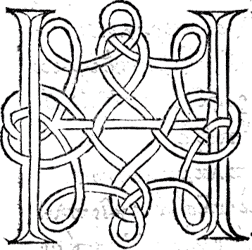 τοι μὲν πϱώτιστα Χάος γένετ᾽, αὐτὰϱ ἔπειτα
τοι μὲν πϱώτιστα Χάος γένετ᾽, αὐτὰϱ ἔπειτα
Γαῖ᾽ εὐϱύστεϱνος, πάντων ἕδος ἀσφαλὲς αἰεὶ
ἀϑανάτων, οἳ ἔχουσι ϰάϱη νιφόεντος Ὀλύμπου,
Τάϱταϱά τ᾽ ἠεϱόεντα μυχῷ χϑονὸς εὐϱυοδείης,
ἠδ᾽ Ἔϱος, ὃς ϰάλλιστος ἐν ἀϑανάτοισι ϑεοῖσι,
λυσιμελής, πάντων δὲ ϑεῶν πάντων τ᾽ ἀνϑϱώπων
δάμναται ἐν στήϑεσσι νόον ϰαὶ ἐπίφϱονα βουλήν.
— 116-122.
 iehe, vor allem zuerst ward Chaos; aber nach diesem
iehe, vor allem zuerst ward Chaos; aber nach diesem
Ward die gebreitete Erd', ein daurender Siz den gesamten
Ewigen, welche bewohnen die Höhn des beschneiten Olympos,
Tartaros' Graun auch im Schooße des weitumwanderten Erdreichs,
Eros zugleich, der, geschmückt vor den Ewigen allen mit Schönheit,
Sanft auflösend, den Menschen gesamt und den ewigen Göttern
Bändiget tief im Busen den Geist und bedachtsamen Rathschluß.
— Johann Heinrich Voss: Hesiods Werke und Orfeus der Argonaut. Heidelberg: Mohr und Zimmer, 1806. p. 87.
Παϱμενίδης ὁ Ἐλεάτης — Parmenides von Elea ⮵
Πϱώτιστον μὲν Ἔϱωτα ϑεῶν μητίσατο πάντων ...
Von allen Göttern zuerst ersann sie den Eros.
Ὀϱφέως Ἀϱγοναυτιϰά — Orphische Argonautika ⮵
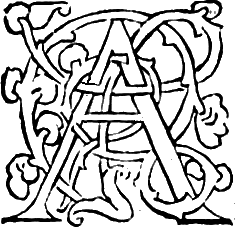 ὐτὰϱ ἔγωγε μετ’ αὐτὸν ἑλὼν φόϱμιγγα λίγειαν
ὐτὰϱ ἔγωγε μετ’ αὐτὸν ἑλὼν φόϱμιγγα λίγειαν
ἐϰ στόματος μελίγηϱυν ἱεὶς ἀνέπεμπον ἀοιδήν.
πϱῶτα μὲν ἀϱχαίου χάεος μελανήφατον ὕμνουν,
ὡς ἐπάμειψε φύσεις, ὥς τ’ οὐϱανὸς ἐς πέϱας ἦλϑε·
γῆς τ’ εὐϱυστέϱνου γένεσιν πυϑμένας τε ϑαλάσσης·
πϱεσβύτατόν τε ϰαὶ αὐτοτελῆ πολύμητιν Ἔϱωτα,
ὣς ϑ’ ἂτ’ ἔφυσεν ἅπαντα διέϰϱιϑεν ἄλλο πϱὸς ἄλλου·
— 419-425.
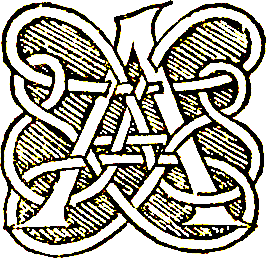 ber ich selbst, nach jenem die klingende Laute mir nehmend
ber ich selbst, nach jenem die klingende Laute mir nehmend
Strömt' aus der Kehle nunmehr den melodischen Gegengesang aus.
Erst das dunkele Lied, wie das uranfängliche Chaos
Sich in Naturen verlor, und der grenzende Himmel sie einschloß;
Dann der gebreiteten Erde Geburt, und die Tiefe des Meeres;
Auch den erhabensten, weisen und selbstvollendenden Eros,
Wie, was er alles gezeugt, sich sonderte andres von andrem;
— Johann Heinrich Voss: Hesiods Werke und Orfeus der Argonaut. Heidelberg: Mohr und Zimmer, 1806. p. 274.
Πλᾰ́τωνος Συμπόσιον — Platon: Symposium ⮵
 ϱῶτον μὲν γάϱ, ὥσπεϱ λέγω, ἔφη Φαῖδϱον ἀϱξάμενον ἐνϑένδε ποϑὲν λέγειν, ὅτι μέγας ϑεὸς εἴη ὁ Ἔϱως ϰαὶ ϑαυμαστὸς ἐν ἀνϑϱώποις τε ϰαὶ ϑεοῖς, πολλαχῇ μὲν ϰαὶ ἄλλῃ, οὐχ ἥϰιστα δὲ ϰατὰ τὴν γένεσιν. τὸ γὰϱ ἐν τοῖς πϱεσβύτατον εἶναι τὸν ϑεὸν τίμιον, ἦ δ᾽ ὅς, τεϰμήϱιον δὲ τούτου: γονῆς γὰϱ Ἔϱωτος οὔτ᾽ εἰσὶν οὔτε λέγονται ὑπ᾽ οὐδενὸς οὔτε ἰδιώτου οὔτε ποιητοῦ, ἀλλ᾽ Ἡσίοδος πϱῶτον μὲν Χάος φησὶ γενέσϑαι
ϱῶτον μὲν γάϱ, ὥσπεϱ λέγω, ἔφη Φαῖδϱον ἀϱξάμενον ἐνϑένδε ποϑὲν λέγειν, ὅτι μέγας ϑεὸς εἴη ὁ Ἔϱως ϰαὶ ϑαυμαστὸς ἐν ἀνϑϱώποις τε ϰαὶ ϑεοῖς, πολλαχῇ μὲν ϰαὶ ἄλλῃ, οὐχ ἥϰιστα δὲ ϰατὰ τὴν γένεσιν. τὸ γὰϱ ἐν τοῖς πϱεσβύτατον εἶναι τὸν ϑεὸν τίμιον, ἦ δ᾽ ὅς, τεϰμήϱιον δὲ τούτου: γονῆς γὰϱ Ἔϱωτος οὔτ᾽ εἰσὶν οὔτε λέγονται ὑπ᾽ οὐδενὸς οὔτε ἰδιώτου οὔτε ποιητοῦ, ἀλλ᾽ Ἡσίοδος πϱῶτον μὲν Χάος φησὶ γενέσϑαι
“... αὐτὰϱ ἔπειτα Γαῖ᾽ εὐϱύστεϱνος, πάντων ἕδος ἀσφαλὲς αἰεί, ἠδ᾽ Ἔϱος ...”
Ἡσιόδῳ δὲ ϰαὶ Ἀϰουσίλεως σύμφησιν μετὰ τὸ Χάος δύο τούτω γενέσϑαι, Γῆν τε ϰαὶ ἔϱωτα. Παϱμενίδης δὲ τὴν γένεσιν λέγει
“πϱώτιστον μὲν ἔϱωτα ϑεῶν μητίσατο πάντων.”
οὕτω πολλαχόϑεν ὁμολογεῖται ὁ Ἔϱως ἐν τοῖς πϱεσβύτατος εἶναι. πϱεσβύτατος δὲ ὢν μεγίστων ἀγαϑῶν ἡμῖν αἴτιός ἐστιν.
— 178α-ξ.
 irst then, as I said, he told me that the speech of Phaedrus began with points of this sort—that Love was a great god, among men and gods a marvel; and this appeared in many ways, but notably in his birth. “Of the most venerable are the honors of this god, and the proof of it is this: parents of Love there are none, nor are any recorded in either prose or verse. Hesiod says that Chaos came first into being
irst then, as I said, he told me that the speech of Phaedrus began with points of this sort—that Love was a great god, among men and gods a marvel; and this appeared in many ways, but notably in his birth. “Of the most venerable are the honors of this god, and the proof of it is this: parents of Love there are none, nor are any recorded in either prose or verse. Hesiod says that Chaos came first into being
“and thereafter rose Broad-breasted Earth, sure seat of all for aye, And Love.”
Acusilaus also agrees with Hesiod, saying that after Chaos were born these two, Earth and Love. Parmenides says of Birth that she
“invented Love before all other gods.”
Thus Love is by various authorities allowed to be of most venerable standing; and as most venerable, he is the cause of all our highest blessings.
— Translated by Harold N. Fowler. London: Heinemann, 1925.
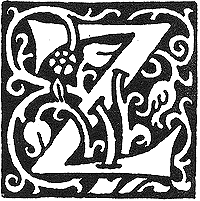 uerst also, wie gesagt, erzählte er, habe Phaidros gesprochen und habe seine Rede ungefähr damit begonnen, daß Eros ein großer Gott sei und bewundernswert unter Menschen und Göttern sowohl aus vielen andern Gründen, als auch namentlich wegen seiner Herkunft. Denn daß er zu den ältesten Göttern gehört, sprach Phaidros, gereicht ihm zu einer besondern Ehre. Hierfür dient aber dies zum Beweise: Eltern des Eros gibt es weder, noch werden dergleichen bei irgend einem Schriftsteller in gebundener oder ungebundener Rede erwähnt; sondern Hesiod sagt, zuerst sei das Chaos gewesen,
uerst also, wie gesagt, erzählte er, habe Phaidros gesprochen und habe seine Rede ungefähr damit begonnen, daß Eros ein großer Gott sei und bewundernswert unter Menschen und Göttern sowohl aus vielen andern Gründen, als auch namentlich wegen seiner Herkunft. Denn daß er zu den ältesten Göttern gehört, sprach Phaidros, gereicht ihm zu einer besondern Ehre. Hierfür dient aber dies zum Beweise: Eltern des Eros gibt es weder, noch werden dergleichen bei irgend einem Schriftsteller in gebundener oder ungebundener Rede erwähnt; sondern Hesiod sagt, zuerst sei das Chaos gewesen,
... aber nach diesem
Ward die gebreitete Erd',
ein dauernder Sitz den gesamten Ewigen ...
Eros zugleich ...
Er sagt also, diese beiden seien zuerst nach dem Chaos entstanden, die Erde und Eros. Parmenides aber schreibt von der zeugenden Urkraft:
Unter allen den Göttern zuerst ersann sie den Eros
Dem Homer stimmt aber auch Akusilaos bei. Von so vielen Seiten her stimmt man darin überein, daß Eros einer der ältesten Götter sei. Als einer der ältesten ist er uns aber zugleich Urheber der höchsten Güter.
— Übersetzt von Franz Susemihl, 1855.
Marsilio Ficino: Commentarium in convivium Platonis de amore ⮵
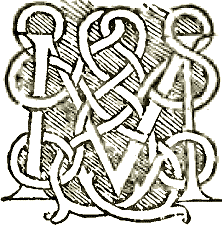 erito igitur antiquissimum hunc Orpheus nominavit. Præterea seipso perfectum, quasi dicat seipsum perficientem. Quoniam primus ille mentis instinctus suapte natura a deo perfectionem suam haurire videtur, atque eam menti quæ inde formatur, et dijs qui inde gignuntur, præbere. Consultissimum insuper nominavit, nec iniuria. Nam omnis sapientia cuius proprium est consilium, ideo menti data est, quia amore in deum conversa, ipsius fulgore resulsit. Eodemque modo mens ad deum, quo ad lumen solis dirigitur oculus. Hic enim aspicit primo, videt deinde solis lumen, tertio in solis lumine rerum colores et figuras comprehendit. Quare oculus obscurus primo et chaos instar informis lumen amat, dum aspicit, irradiatur aspiciendo; radium accipiendo rerum coloribus figurisque formatur. Quemadmodum vero in deum mens illa statim nata et informis amore convertitur et formatur, sic mundi anima in mentem deumque illinc genita se reflectit. Et cum primo informis sit et chaos amore in mentem directa, acceptis ab ea formis sit mundus. Non aliter et mundi huius materia, cum principio sine formarum ornamento informe chaos iaceret, illico amore sibi ingenito in animam se direxit seque illi obedientem præbuit, atque hoc amore conciliante, ab anima formarum omnium, quæ in mundo videntur nacta ornamentum, mundus ex chaos effecta est. Tres igitur mundi, tria et chaos. In omnibus denique amor chaos comitatur, præcedit mundum torpentia suscitat, obscura illuminat, vivificat mortuos, format informia, perficit imperfecta. Quibus laudibus nullæ ferme maiores aut dici aut excogitari possunt.
erito igitur antiquissimum hunc Orpheus nominavit. Præterea seipso perfectum, quasi dicat seipsum perficientem. Quoniam primus ille mentis instinctus suapte natura a deo perfectionem suam haurire videtur, atque eam menti quæ inde formatur, et dijs qui inde gignuntur, præbere. Consultissimum insuper nominavit, nec iniuria. Nam omnis sapientia cuius proprium est consilium, ideo menti data est, quia amore in deum conversa, ipsius fulgore resulsit. Eodemque modo mens ad deum, quo ad lumen solis dirigitur oculus. Hic enim aspicit primo, videt deinde solis lumen, tertio in solis lumine rerum colores et figuras comprehendit. Quare oculus obscurus primo et chaos instar informis lumen amat, dum aspicit, irradiatur aspiciendo; radium accipiendo rerum coloribus figurisque formatur. Quemadmodum vero in deum mens illa statim nata et informis amore convertitur et formatur, sic mundi anima in mentem deumque illinc genita se reflectit. Et cum primo informis sit et chaos amore in mentem directa, acceptis ab ea formis sit mundus. Non aliter et mundi huius materia, cum principio sine formarum ornamento informe chaos iaceret, illico amore sibi ingenito in animam se direxit seque illi obedientem præbuit, atque hoc amore conciliante, ab anima formarum omnium, quæ in mundo videntur nacta ornamentum, mundus ex chaos effecta est. Tres igitur mundi, tria et chaos. In omnibus denique amor chaos comitatur, præcedit mundum torpentia suscitat, obscura illuminat, vivificat mortuos, format informia, perficit imperfecta. Quibus laudibus nullæ ferme maiores aut dici aut excogitari possunt.
— I,iii. Opera omnia. Basel, 1576. II, p. 1322.
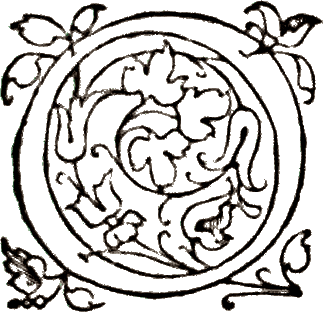 rpheus also called Love the best counseled. And rightly. For all wisdom, to which counsel belongs, was given to the Mind, because it turned toward God through Love and shone with His glory. The mind is turned toward God in the same way that the eye is directed toward the light of the sun; next it sees the light of the sun; third, in the light of the sun it perceives the colors and shapes of things. Therefore the eye, at first dark and, like Chaos, formless, loves the light while it looks toward it; in so looking, it is illuminated; in receiving the ray, it is informed with the colors and shapes of things. But in the same way that the Mind, just born and formless, is turned by Love toward God and is formed, so also the World Soul turns itself toward the Mind and God, from which it was born. And although it is at first formless and a chaos, when it is directed by Love toward the Mind, having received from it the Forms, it becomes a world. In the same way also, the Matter of this World, although in the beginning it lay a formless chaos, without the ornament of Forms, immediately because of a love innate in itself, it directed itself toward the Soul and offered itself obedient to it, and through this conciliating love, receiving from the Soul the ornament of all the Forms which are seen in this world, from a chaos became a world. Therefore there are three worlds, and three chaoses. In all of them finally, Love accompanies chaos, precedes the world, wakens the sleeping, lights the dark, gives life to the dead, gives form to the formless, perfects the imperfect. Greater praises than these can hardly be expressed or conceived.
rpheus also called Love the best counseled. And rightly. For all wisdom, to which counsel belongs, was given to the Mind, because it turned toward God through Love and shone with His glory. The mind is turned toward God in the same way that the eye is directed toward the light of the sun; next it sees the light of the sun; third, in the light of the sun it perceives the colors and shapes of things. Therefore the eye, at first dark and, like Chaos, formless, loves the light while it looks toward it; in so looking, it is illuminated; in receiving the ray, it is informed with the colors and shapes of things. But in the same way that the Mind, just born and formless, is turned by Love toward God and is formed, so also the World Soul turns itself toward the Mind and God, from which it was born. And although it is at first formless and a chaos, when it is directed by Love toward the Mind, having received from it the Forms, it becomes a world. In the same way also, the Matter of this World, although in the beginning it lay a formless chaos, without the ornament of Forms, immediately because of a love innate in itself, it directed itself toward the Soul and offered itself obedient to it, and through this conciliating love, receiving from the Soul the ornament of all the Forms which are seen in this world, from a chaos became a world. Therefore there are three worlds, and three chaoses. In all of them finally, Love accompanies chaos, precedes the world, wakens the sleeping, lights the dark, gives life to the dead, gives form to the formless, perfects the imperfect. Greater praises than these can hardly be expressed or conceived.
— Translated by Sears Reynolds Jayne: Marsilio Ficino. Commentary on Plato’s Symposium on Love. Dallas: Spring Publications, 1985. pp. 39-40.
 x omnibus iis colligitur eos qui amore accensi pulchritudinem sitiunt, si modo velint liquore hoc hausto ardentissimam sitim extinguere, alibi quam in materiæ fluvio, aut quantitatis aut figuræ aut colorum quorumlibet rivulis dulcissimum pulchritudinis huius humorem, quo sitis eorum accenditur, quærere oporteret. Quo vos tandem, o miseri, vertetis amantes? Quis vestri cordis flammas accendit acerimas? Quis tantum sedabit incendium?
x omnibus iis colligitur eos qui amore accensi pulchritudinem sitiunt, si modo velint liquore hoc hausto ardentissimam sitim extinguere, alibi quam in materiæ fluvio, aut quantitatis aut figuræ aut colorum quorumlibet rivulis dulcissimum pulchritudinis huius humorem, quo sitis eorum accenditur, quærere oporteret. Quo vos tandem, o miseri, vertetis amantes? Quis vestri cordis flammas accendit acerimas? Quis tantum sedabit incendium?
— V,iii. Opera omnia. Basel, 1576. II, p. 1336.
 rom all these arguments the conclusion is that for those who are aroused by love and thirst for beauty it is necessary, if they wish to quench their burning thirst by drinking this liquid, to seek the very sweet humor of this beauty by which their thirst is kindled elsewhere than in the river of matter or in the streams of quantity, shape or any colors. Where, finally, will you turn, o wretched lovers? Who kindled the burning flames of your heart? Who will extinguish so great a fire?
rom all these arguments the conclusion is that for those who are aroused by love and thirst for beauty it is necessary, if they wish to quench their burning thirst by drinking this liquid, to seek the very sweet humor of this beauty by which their thirst is kindled elsewhere than in the river of matter or in the streams of quantity, shape or any colors. Where, finally, will you turn, o wretched lovers? Who kindled the burning flames of your heart? Who will extinguish so great a fire?
— Translated by Sears Reynolds Jayne: Marsilio Ficino. Commentary on Plato’s Symposium on Love. Dallas: Spring Publications, 1985. p. 89.
Marsilio Ficino: De vita libri tres ⮵
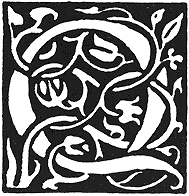 uo quidem attractu secum ipso devinciri mundum testantur sapientes Indi, dicentes mundum esse animal passim masculum simul atque feminam, mutuoque membrorum suorum amore ubique coire secum, atque ita constare[a]; vinculum vero membrorum inesse per insitam sibi mentem, quae totam infusa per artus agitat molem, et magno se corpore miscet[b]. Hinc Orpheus naturam ipsam mundi Iovemque mundanum marem appellat et feminam[c]. Usque adeo mutui partium suarum coniugii ubique mundus est avidus. Esse vero masculinum sexum feminino ubique commixtum, declarat illinc quidem ordo signorum, ubi praecedens perpetuo deinceps ordine masculinum est, subsequens femininum.
uo quidem attractu secum ipso devinciri mundum testantur sapientes Indi, dicentes mundum esse animal passim masculum simul atque feminam, mutuoque membrorum suorum amore ubique coire secum, atque ita constare[a]; vinculum vero membrorum inesse per insitam sibi mentem, quae totam infusa per artus agitat molem, et magno se corpore miscet[b]. Hinc Orpheus naturam ipsam mundi Iovemque mundanum marem appellat et feminam[c]. Usque adeo mutui partium suarum coniugii ubique mundus est avidus. Esse vero masculinum sexum feminino ubique commixtum, declarat illinc quidem ordo signorum, ubi praecedens perpetuo deinceps ordine masculinum est, subsequens femininum.
— De vita libri tres, III,xxvi.
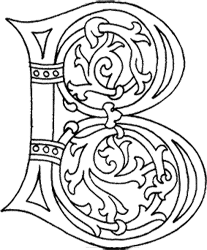 y means of this attraction, the wise men of India testify, the world binds itself together; and they say that the world is an animal which is masculine and at the same time feminine throughout and that it everywhere links with itself in the mutual love of its members and so holds together; moreover, the bond of the members inheres through the ingrafted Mind, which is blended through the limbs and moves the whole bulk and mixes itself with the great body. Hence Orpheus called the very nature of the cosmos and the cosmic Jupiter masculine and feminine. So eager is the world everywhere for the mutual union of its parts. That the masculine sex is truly everywhere mingled with the feminine, the order of signs testifies from up there, where successively in that unending order the preceding one is masculine, the subsequent one, feminine.
y means of this attraction, the wise men of India testify, the world binds itself together; and they say that the world is an animal which is masculine and at the same time feminine throughout and that it everywhere links with itself in the mutual love of its members and so holds together; moreover, the bond of the members inheres through the ingrafted Mind, which is blended through the limbs and moves the whole bulk and mixes itself with the great body. Hence Orpheus called the very nature of the cosmos and the cosmic Jupiter masculine and feminine. So eager is the world everywhere for the mutual union of its parts. That the masculine sex is truly everywhere mingled with the feminine, the order of signs testifies from up there, where successively in that unending order the preceding one is masculine, the subsequent one, feminine.
— Translated by Angela Voss. Berkeley: North Atlantic Books, 2006. p. 174.

